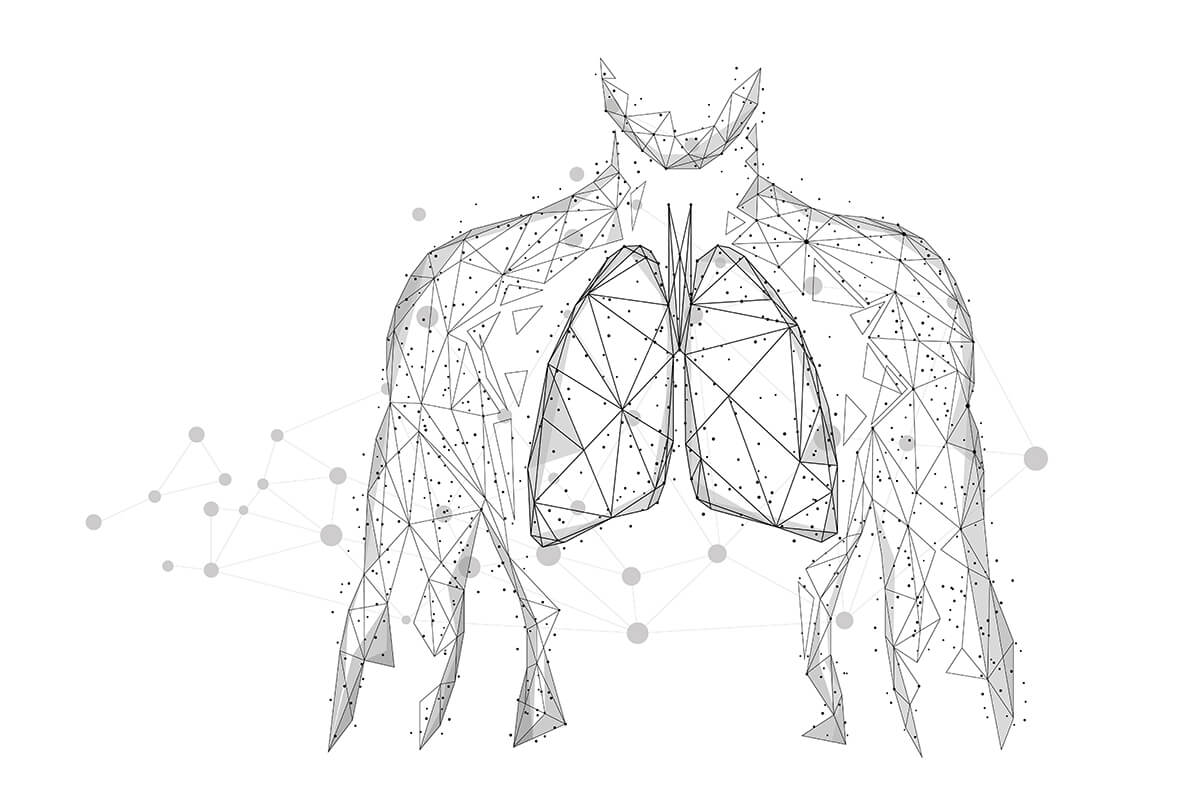Physiotherapy incorporates various branches of clinical specialism, e.g. neurology, trauma and orthopaedics or cardiology. In some countries, respiratory physiotherapy is one of the three most important areas of physiotherapy, while in other countries it is still undervalued. Respiratory physiotherapy is commonly associated with airway clearance techniques, postural drainage or breathing exercises. However, these techniques only constitute a fragment of its therapeutic scope and respiratory physiotherapy is de facto much more! Physiotherapists who specialize in this field work with range of people e.g. after thoracic surgery, with ineffective cough or ventilation due to neuromuscular diseases or spinal cord, with ventilation dysfunction during exacerbations of chronic diseases, mechanically ventilated in intensive care units, hospitalized due to pneumonia or acute airway infections in all ages (including children). Physiotherapists also play an important role in the management of patients with functional disorders of the respiratory system, e.g. hyperventilation syndrome or hypoventilation in advanced obesity. Respiratory physiotherapy is also invaluable for neonates with respiratory dysfunction. This article aims to explain the scope of respiratory physiotherapy in the context of current medical knowledge and latest clinical recommendations.
Not just patients with pulmonary diseases
The general goal of physiotherapy is to provide an optimal level of physical and emotional functioning for patients in all phases of disease process [1]. This principle applies to the early period after the diagnosis, both in acute and chronic conditions (when stable and during exacerbation), as well as at the end of a patient’s life. Respiratory Physiotherapists practice in intensive care units [2], on hospital wards, in outpatient clinics and increasingly in the community [1,3]. Respiratory physiotherapists are responsible for comprehensive subjective and objective patient assessment , in relation to the respiratory and other systems. The process of clinical reasoning involves careful analysis of assessment findings and consideration of patients’ goals based on their individual needs ad including consideration of psycho-social elements. This enables to plan effective and safe physiotherapeutic intervention. It is important to emphasise that respiratory physiotherapy does not limit itself to treating only patients with pulmonary conditions. Naturally, this specialty of physiotherapy is crucial in comprehensive treatment of patients living with diseases such as cystic fibrosis (CF), chronic obstructive pulmonary disease (COPD), asthma, bronchiectasis or pulmonary fibrosis. In therapy of the above-mentioned groups of patients, implementation of the following methods plays an essential role: airway clearance techniques (called “chest therapy” in literature), non-invasive ventilation (both in exacerbations during hospitalization and at home), ambulatory oxygen therapy or, physical training as a part of pulmonary rehabilitation programmes. Furthermore, respiratory physiotherapy is also important in treating other disorders which are associated or may lead to respiratory complication, such as difficulties in expectoration in patients with neuromuscular diseases or spinal cord injuries, patients who have undergone surgical procedures, as well as critically ill or obese patients. Appropriate assessment, patient evaluation and adequate intervention often prevent serious complications, which could potentially lead to permanent disability or premature death.
Only scientific evidence
Methods utilised by respiratory physiotherapy are based on research evidence. There is a significant number of publications in this field of physiotherapy – there are numerous textbooks for respiratory physiotherapy [4, 5] clinical guidelines [2, 6, 10] and recommendations prepared in accordance with strong scientific evidence and experts’ opinions [7-9]. Techniques used in respiratory physiotherapy aim to: clear bronchial secretions, reduce work of breathing or increase reduced lung volume [5]. While these techniques are extensively described in professional literature, the decision about their implementation and effectiveness must be based on an individual patient assessment, evaluation of mechanisms which led to the problem such as secretion retention, as well as evaluating its clinical effectiveness [2, 4, 5, 6, 11]. For instance, Active Cycle of Breathing Techniques (ACBT) is a method widely applied airway diseases, whereas cough assist using mechanical insufflation exsufflation (MIE) is mostly used in patients with neuromuscular diseases and manual hyperinflation (MHI) is recommended for intubated and mechanically ventilated patients in intensive care units. Respiratory physiotherapists also actively participate in the care of patients who use non-invasive ventilation in order to support respiratory muscle [12, 13], using techniques to relieve symptoms such as dyspnoea [4, 6, 14]. These physiotherapists also have general knowledge and skills about physical training and improving patients’ exercise capacity and muscle strength. Respiratory physiotherapy specialists are an integral part of pulmonary rehabilitation teams and often they lead the team. Pulmonary rehabilitation is a comprehensive and economically effective program of sessions which last several weeks and involve: physical training, education, health behaviour change and self-management [15]. This form of therapy is recognised as a standard of health management in patients with chronic respiratory diseases, especially with COPD [16-18].
HERMES
The scope and areas of respiratory physiotherapy are broad, which is why professionals who specialize in this field should be an integral part of every therapeutic team – especially the teams working in hospitals, outpatient clinics, in long-term, palliative care, and in the community. Nevertheless, there are huge differences in clinical practice, workforce training and accessibility to these specialists, even among the European Union countries and despite the fact that the education systems in Europe follow the Bologna agreement. In 2012, an international task force group was created to define the scope and to develop a postgraduate training programme in for respiratory physiotherapy specialists. This group was established in association with the European Respiratory Society (ERS) education program under the name “HERMES” (Harmonised Education in Respiratory Medicine for European Specialists). Hundreds of specialists from 30 countries, including Poland, have taken part in consultations. Using the Delphi process, a consensus was agreed and used to prepare the syllabus and a structured postgraduate curriculum for respiratory physiotherapists all around the world. The syllabus was published in 2015 [19], while the complete curriculum with detailed learning outcomes was published in 2019 [20]. This project is not only important as an indicator of post-graduate education standards but also as a tool for evaluation of the level of knowledge, skills and attitudes expected from physiotherapists who work with patients affected by various respiratory dysfunctions. These problems may appear in different stages of life, in the course of various diseases, after surgical treatment or as a result of serious injuries, as has been mentioned before. A well-trained physiotherapist is able to conduct an independent patient assessment, define their therapeutic problems by means of clinical reasoning and create an adequate physiotherapy plan. In order to make sure that physiotherapists are ready to perform complex assessment and provide appropriate therapy, we ought to take a closer look at undergraduate teaching programs and evaluate – according to the HERMES curriculum – whether we are offering sufficient preparation for Polish physiotherapists. The standard of education at undergraduate level and the quality of practice education often determine which career pathway junior physiotherapists are going to choose. It is also critical to ensure continuous professional development opportunities and create a team of specialists in this field, who will become mentors and experts for other physiotherapists and will also lead among other healthcare professionals. Without properly trained and experienced specialists in respiratory physiotherapy, a large group of patients do not have access to the treatment which could help with their recovery, prevent dangerous complications, improve quality of life or even prolong life.
Respiratory physiotherapy and COVID-19
This year a pandemic of a virus attacking the respiratory system has revealed disparities in the level of training, skills and preparation of physiotherapists for treating patients with acute respiratory failure. It became transparent that some recommendations and guidelines prepared according to current scientific knowledge and international expertise cannot be implemented in many countries, including Poland. This period has allowed physiotherapists themselves to gain more knowledge about what opportunities respiratory physiotherapy may offer. Now comes the time to evaluate and reflect on the needs and goals of respiratory physiotherapy in our country, as well as to discuss how such goals can be achieved.
Bibliography
1. Bott J: Respiratory care: A very necessary specialty in the 21st century. Physiotherapy 2000; 86: 2
2. Gosselink R, Bott J, Johnson M, et al. Physiotherapy for adult patients with critical illness: Recommendations of the European Respiratory Society and European Society of Intensive Care Medicine Task Force on Physiotherapy for Critically Ill Patients. Intensive Care Medicine 2008; 34: 1188-1199
3. Stevenson R, Angus R, Blanchard M, et al. Intermediate care – Hospital-at-Home in chronic obstructive pulmonary disease: British Thoracic Society guideline. Thorax 2007; 62: 200-210
4. Main, E and Denehy, L. Cardiorespiratory Physiotherapy: Adults and Paediatrics. 5th Edition, Elsevier Health Science 2016.
5. Hough, A. Hough’s Cardiorespiratory Care. An evidence-based, problem-solving approach. 5th Edition, Elsevier 2018.
6. Bott J, Blumenthal S, Buxton M. et al. Guidelines for the physiotherapy management of the adult, medical, spontaneously breathing patient. Thorax 2009; 64(Suppl I): i1-i51.
7. Gosselink R, Clerckx B, Robbeets C et al. Physiotherapy in the Intensive Care Unit. Netherlands J. Critical Care. 2011; 15(2):66-75.
8. Renault JA, Costa-Val R, Rossetti MB. Respiratory physiotherapy in the pulmonary dysfunction after cardiac surgery. Revista Brasileira de Cirurgia Cardiovascular 2008; 23(4): 562-569
9. Larsen KS, Skoffer B, Gregersen Oestergaard L, Van Tulder M, Petersen AK. The effects of various respiratory physiotherapies after lung resection: a systematic review. Physiother Theory Pract. 2019; 1‐19
10. Strickland SL, Rubin BK, Drescher GS et al. AARC Clinical Practice Guideline: Effectiveness of Nonpharmacologic Airway Clearance Therapies in Hospitalized Patients. Respiratory Care December 2013; 58 (12): 2187-2193
11. Chatwin M, Toussaint M, Gonçalves MR et al. Airway clearance techniques in neuromuscular disorders: A state of the art review. Respiratory Medicine 2018; 136: 98–110
12. Piper AJ, Moran FM. Non-invasive ventilation and the physiotherapist: current state and future trends, Physical Therapy Reviews 2006; 11 (1): 37-43
13. Menadue C, Piper AJ, van ’t Hul AJ, et al. Non-invasive ventilation during exercise training for people with chronic obstructive pulmonary disease. Cochrane Database of Systematic Reviews 2014; Issue 5. No.: CD007714
14. Taylor J. Breathlessness and fear. In: Potential and Possibility: Rehabilitation at end of life. Physiotherapy in Palliative Care. Taylor J, Simader R, Nieland P (eds.). Urban and Fischer, Mönchen 2013
15. Global initiative for chronic obstructive lung disease (GOLD) global strategy for the diagnosis, management, and prevention of chronic obstructive pulmonary disease. Report 2020. Dostępny na: https://goldcopd.org/gold-reports/
16. NICE. Chronic obstructive pulmonary disease in over 16s: diagnosis and management. NICE guideline [NG115]. 2019. Dostępny na: https://www.nice.org.uk/guidance/ng115/chapter/Recommendations#managing-stable-copd
17.Śliwiński P, Górecka D, Jassem E, et al. Zalecenia Polskiego Towarzystwa Chorób Płuc dotyczące rozpoznawania i leczenia przewlekłej obturacyjnej choroby płuc. Pneumonologia i Alergologia Polska 2014; 82 (3): 227–263
18. Spruit, MA. et al. ATS/ERS Statement:key concepts and advances in pulmonary rehabilitation. J. of Resp. and Crit. Care Med. 2013; 188 (8): e13–e64
19. Pitta F, Mitchell S, Chatwin, M, et al. A core syllabus for post-graduate training in respiratory physiotherapy. Breathe – Continuing Medical Education for Respiratory Professionals 2014; 10(3): 220-228.
20. Troosters T, Tabin N, Langer D, et al Introduction of the harmonised respiratory physiotherapy curriculum. Breathe 2019; 15(2): 110-115.




